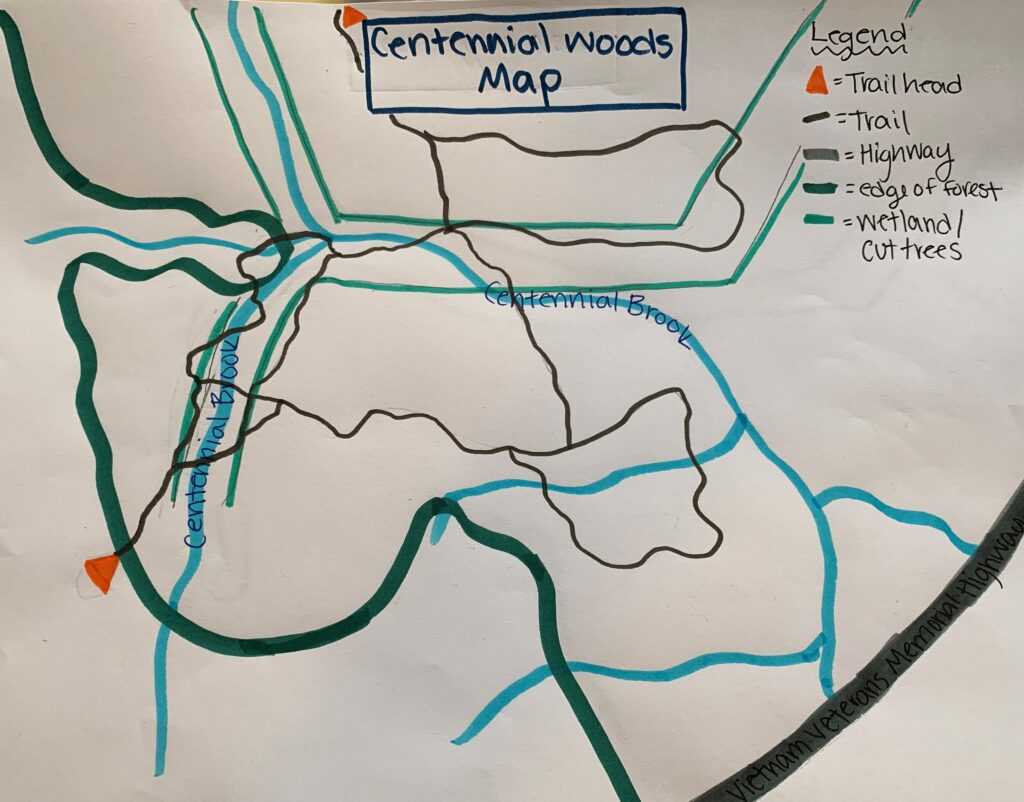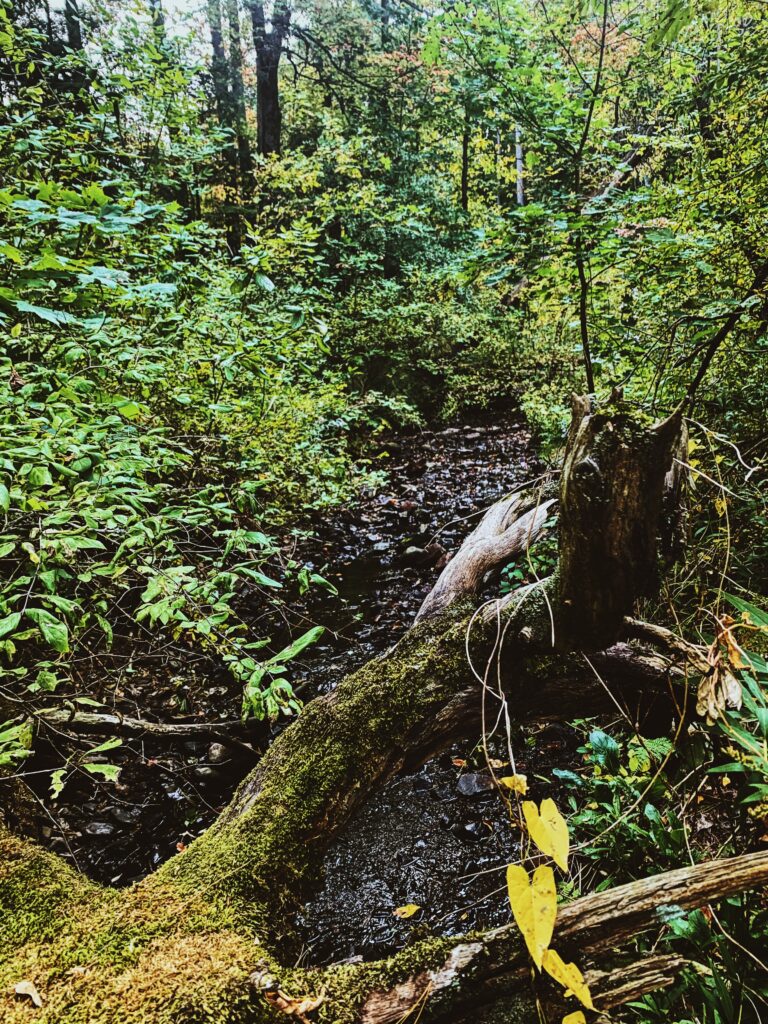Centennial Woods Map
Phenology update:
It has been about a month since I’ve gone to Centennial Woods. Last time I was there, flowers were blooming in the wetland area and the trees were still green for the most part. However, upon returning I found that the leaves had started to completely change colors, the sun is setting sooner, and the nights are continuing to get colder. As the season changes, there is less precipitation on average, which is evident in the drier soils compared to the previous visit I made.
Centennial Woods map:

Exemplification of Phenology

Observations:
-rich and green
-leaves have begun to slightly change color
-very little in terms of the transition from summer to fall
Versus …
Observations:
-Leaves almost all changed colors or have fallen on ground
-most vegetation is in its dormant state in preparation for the oncoming winter
Wildlife Signs:
With the seasons changing, the plants in Centennial Woods have clearly started to transition into their dormant states in preparation for the winter. With that said, animals that inhabit the area are beginning to do the same as well. While hiking through the woods, I walked to the stream edge and noticed very small animal tracks that lead away from the water and faded away as the soil became drier the farther away from the water source they went. I was able to immediately identify that the tracks were that of a racoon. Additionally, I was able to spot several bird nests while hiking in the woods, and I heard the sounds of birds chirping all throughout the endeavor. Of all the wildlife known to live within the woods, I was able to find evidence of several different bird species that live within Centennial Woods as well as evidence of the common racoon.
